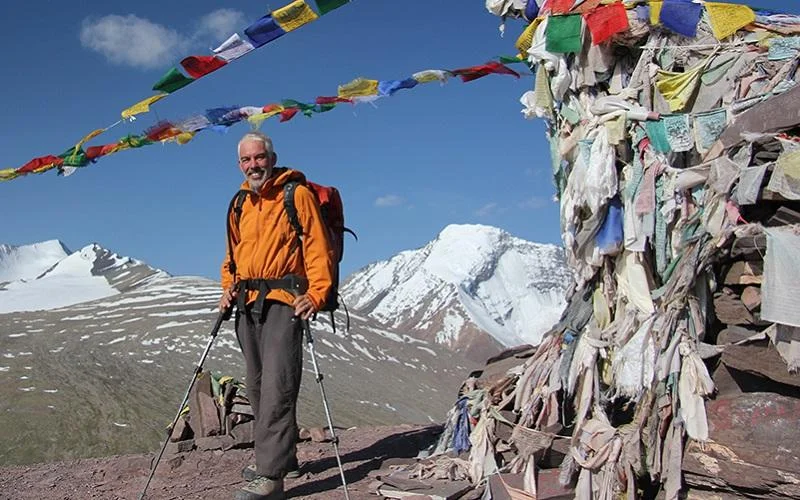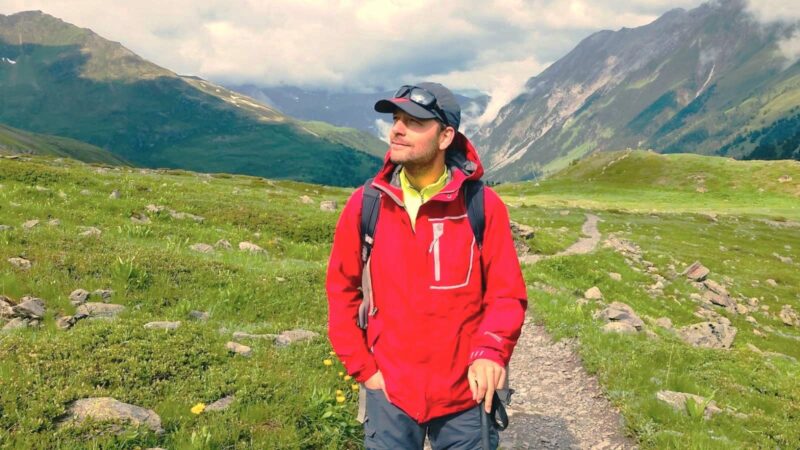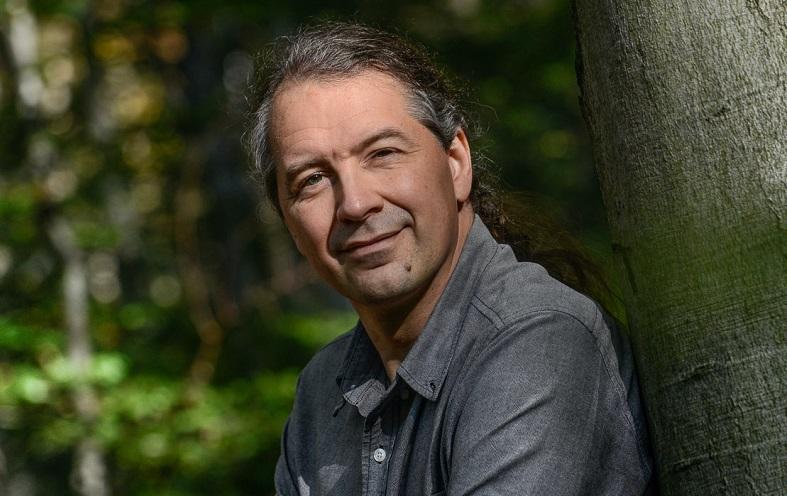
A playground for mountaineers and adventure enthusiasts, how is Destination Nepal affected by COVID-19, and which opportunities does the coronavirus pandemic present to make the country’s tourism industry more sustainable? Those are two of the questions which Lisa Choegyal discusses in our interview. The tourism consultant and Director of Tiger Mountain Nepal also highlight why business sustainability is first and foremost about being financially sustainable, and why a temporary forced to focus on domestic travel due to the current situation might benefit the destination in the long-term.
Lisa, you are a leading sustainable tourism consultant in the Asia Pacific region. Do you remember what got you first interested in tourism and sustainability?
I’ve always been interested in conservation. After studying art history in Paris, my first job was selling antiques in New York. But when I arrived in Nepal it seemed entirely natural to adapt art and heritage conservation to nature and wildlife.
Nepal tourism was in its infancy in the 1970s and was receptive to innovation and change. The Royal family were keen on hunting and led the impetus for wildlife conservation. FAO was forging national parks and protected areas all over Asia, and Nepal was at the forefront. Nepal IUCN and UNESCO World Heritage Site listings were the first in South Asia.
In 1974, I was lucky to stumble upon Tiger Tops, which was actively practising ecotourism and sustainability before the words were even invented! The lodge had started operations in 1965, whereas Chitwan National Park was only gazetted in 1970 and established in 1973. It was exciting times. And Nepal led all Asian destinations in forging the links between wildlife and heritage tourism with their conservation by involving local communities.
How have your views on sustainable tourism changed over the years?
In this current environment, I think we all have to agree that the only hope is sustainable tourism. In the Himalayan context, this is inextricably linked with climate change. Our response to COVID-19 has taught us some harsh lessons. Anyone who does not heed them is unlikely to survive.
Despite the preaching of academia and idealists, the first rule of sustainable tourism is to be financially viable and to make money. Otherwise you will not be in a position to help anyone – neither local people, climate change, heritage, nature or wildlife. The current coronavirus pandemic is really putting that to the test, and convinces me that serious, practical solutions are the only answer.
Being based in Nepal, which would you consider the destination’s strongest tourism sustainability assets?
Nepal boasts of amazing assets in terms of scenery, wildlife, people, living culture, and historic monuments.
The mountain people of Nepal possess an innate sense of hospitality, which is one of our most enduring attractions.
Also, over the years the success of development programmes with partners such as ADB, DFID, UNDP, World Bank Group and many other bilateral and multilateral donors have left Nepal with a strong legacy of sustainable tourism. Thanks to their support, we have a cadre of highly skilled grassroots specialists who understand the concepts and can help translate them into tangible benefits for the country and its people.
Which are Nepal’s main challenges?
Nepal’s sense of inferiority, surrounded by giant neighbours, means it often does not give itself enough credit or have confidence in its actions. Nepal does not need to feel threatened by foreign investors. Tourism is by definition an international business with the potential to bring meaningful FDI to strengthen the country.
There are many examples where Nepal has been a leader – especially in Asia – in hands-on sustainable tourism initiatives, but it seldom gives itself the due credit.
Examples include the private-public partnership model of the Nepal Tourism Board, using trekking and the Great Himalaya Trail to spread tourism benefits east-west along the Nepal Himalaya, as well as much-admired heritage tourism models, such as Dwarikas Hotel. And the national parks in Nepal’s Tarai lowlands provide some of the very best wildlife viewings in Asia, able to show visitors iconic species.
The coronavirus pandemic has turned travel upside down these past months. How are you coping or adjusting?
I personally am relatively lucky in that our Tiger Mountain Pokhara Lodge has no outstanding debt and is likely to weather the storm under the MD, Marcus Cotton.
But we have had to postpone the Sustainable Summits 2020 Nepal conference that we had won for Nepal and which I am involved in organising. It is sad, as we had strong links as part of the Hindu Kush Himalaya voice for CoP-26 (which is also postponed) with a galaxy of star speakers confirmed, including the former New Zealand Prime Minister, Rt Hon Helen Clark, Ben Fogle, Reinhold Messner, and Sir Chris Bonington.
In personal terms, I usually work from home and we live on the edge of Kathmandu Valley, where lock-down is not onerous.
But Nepal’s travel industry is devastated.
It is only now that many will realise how far-reaching are the tourism benefits within Nepal, how important the indirect as well as direct impacts of tourism, and how harsh the fallout is going to be for all but the more professional or deep-pocketed operators.
Apart from the many challenges that COVID-19 poses, do you think this crisis also presents an opportunity? How can we make the best out of it?
The coronavirus pandemic presents wonderful opportunities to clean up the industry and to reward the most innovative and responsible operators. We will have a renewed appreciation of the importance of the domestic market, which in Nepal many remember kept us going through the 10-year insurgency that ended in 2006.
We have never regained the full spectrum of markets since then, having (as a broad generalisation) lost the high-end and become established as a low-cost budget destination, driven by growth from the cost-conscious segments from our neighbours India and China.
The recent story of Nepal tourism is that we have had 25% growth but a 23% reduction in daily expenditure by visitors, despite work by the Nepal Tourism Board and Government of Nepal initiatives, such as Visit Nepal Year 2020 (now abandoned, of course).
The current crisis allows us to attract international visitors prepared to pay for our amazing assets. Why are we selling ourselves so cheap? This is a chance for Nepal to decide what sort of visitors the people of Nepal need and want, that will bring them the maximum benefits throughout the country.
To make the best of the COVID-19 challenge, I believe that deep within our hearts this is a chance for us global travellers to readjust our unsustainable sense of entitlement and expectations from travel, to appreciate and value rather than to trample and consume.
Imagine it being May 2021. How do you think the pandemic will have changed travel and tourism, from a sustainability point of view?
In a year, many markets will still be resetting and re-evaluating the fallout from the devastating effects of COVID-19. The essential meaning of the word ‘sustainability’ will be truly tested. Many national and international companies will not survive this crisis, and the hope is that the ones that do, will be stronger for it.
In Nepal, the current oversupply of hotel rooms in Kathmandu and Pokhara, for example, may become adjusted more healthily by market forces.
Domestic tourism will become massive worldwide. I would like to think that courageous, responsible tourism operators in Nepal and elsewhere will be rewarded for developing innovative and sustainable products that are market-driven and will stand the test of time.
If you had to choose just one recent project of yours, for the impact it has had on you and the involved community: which would it be?
I’d have to say Tiger Mountain Pokhara Lodge (of which I am an owner). Since opening in 1998 (by Sir Edmund Hillary) we have survived both internal upheavals and external forces to survive as a model of high-value responsible tourism, setting standards in Nepal and working to benefit our adjacent communities. But then you could say I am biased!
Thank you, Lisa.
Connect with Lisa Choegyal on LinkedIn.
Enjoyed our interview with Lisa Choegyal on how the coronavirus pandemic is affecting the Nepalese tourism industry, and how travel and tourism might emerge stronger from this crisis? Thanks for sharing!











